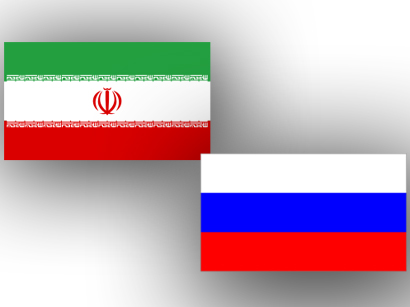Baku, Azerbaijan, April 10
By Azer Ahmadbayli – Trend:
Threatening to withdraw from the Iranian nuclear agreement, increasing pressure around Syria and imposing new sanctions against Iran and Russia, the United States throws Tehran and Moscow into each other's arms.
Last week, presidents of Russia, Iran and Turkey met in Ankara to adopt a common position on the future order in post-war Syria and the preservation of Iran's nuclear deal.
This week, the speakers of the parliaments of Iran and Russia signed the regulations of the inter-parliamentary cooperation commission, which will, in particular, increase trade and investment cooperation in the fields of nuclear energy, agriculture, construction of infrastructure in the Caspian Sea.
Meanwhile, the Eurasian Economic Union (EEU) and Iran are finalizing an agreement on the establishment of a free trade zone. Addressing the Russian-Iranian Business Forum in Tehran, Iranian Parliament Speaker Ali Larijani said a result will hopefully be obtained within the next month.
The Iranian speaker said the development would remove the customs obstacles in trade with Iran. The aim is to lower customs tariffs with the EEU member states and to encourage increase of the trade volume.
Last year, trade turnover between the two sanctioned countries made only $1.7 billion.
Russian speaker Vyacheslav Volodin, who took part in the business forum, noted: “Iran’s share in Russia’s foreign trade turnover amounted to 0.4 percent, whereas Russia’s share [in Iran’s foreign trade turnover] is 2.5 percent. But the potential is much higher, and we need to unleash it. If the planned projects are implemented, the volume of Russian investments may amount to billions of dollars.”
The last US sanctions, imposed on April 6, got down the Russian stock market. Bloomberg notes that the sharp decline in business indices is a record-breaking for the last two years.
The Russian currency has also been depreciating rapidly for the second consecutive day against investors’ stampede from ruble-denominated assets due to the worsening of geopolitical risks.
In a situation where many Russian companies are about to be denied access to foreign markets, attracting Iran with its 80 million population into the orbit of EEU looks absolutely logical.
The same also applies to Iran.
The current situation in Iran is anything but calm. Continuous external pressure, signs of discontent in the Iranian society, periodic popular bursts such as in the Arab-populated province of Khuzestan, and continuous depreciation of the Iranian currency over the past several months, which, by the way, has sharply worsened within the last two days – all of this pushes Iran to rely on a powerful northern neighbor.
Despite Tehran's traditional drive for the European market, for the time being it has no choice but to stay close to the less complex and mature economic space of EEU, to buy Russian SSJ-100 passenger aircraft and to use the payment cards of the Russian Mir national payment system.
The EU has not yet joined President Trump's tough stance on Iran, but Tehran has to prepare itself immediately for the worst-case scenario.






